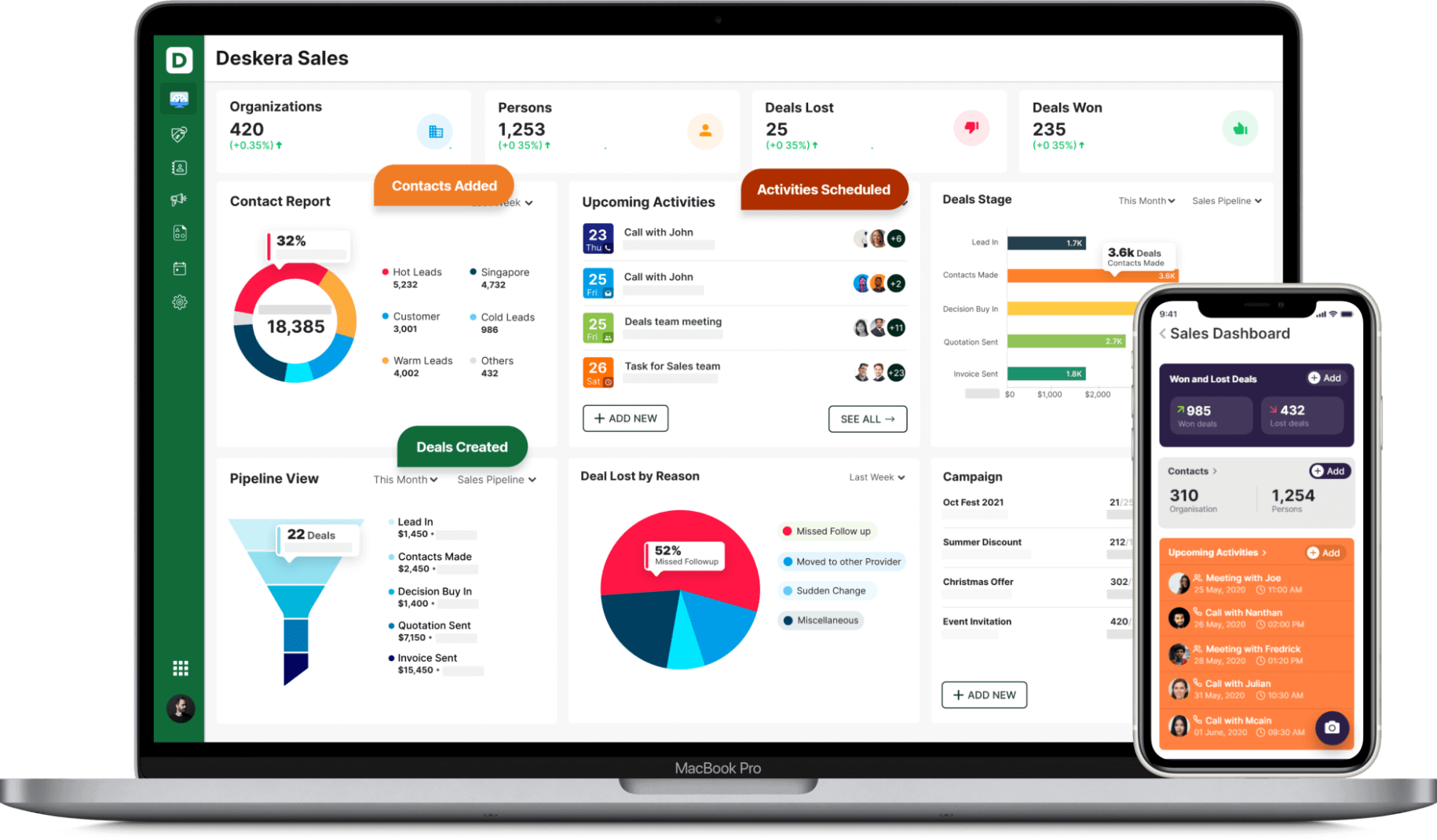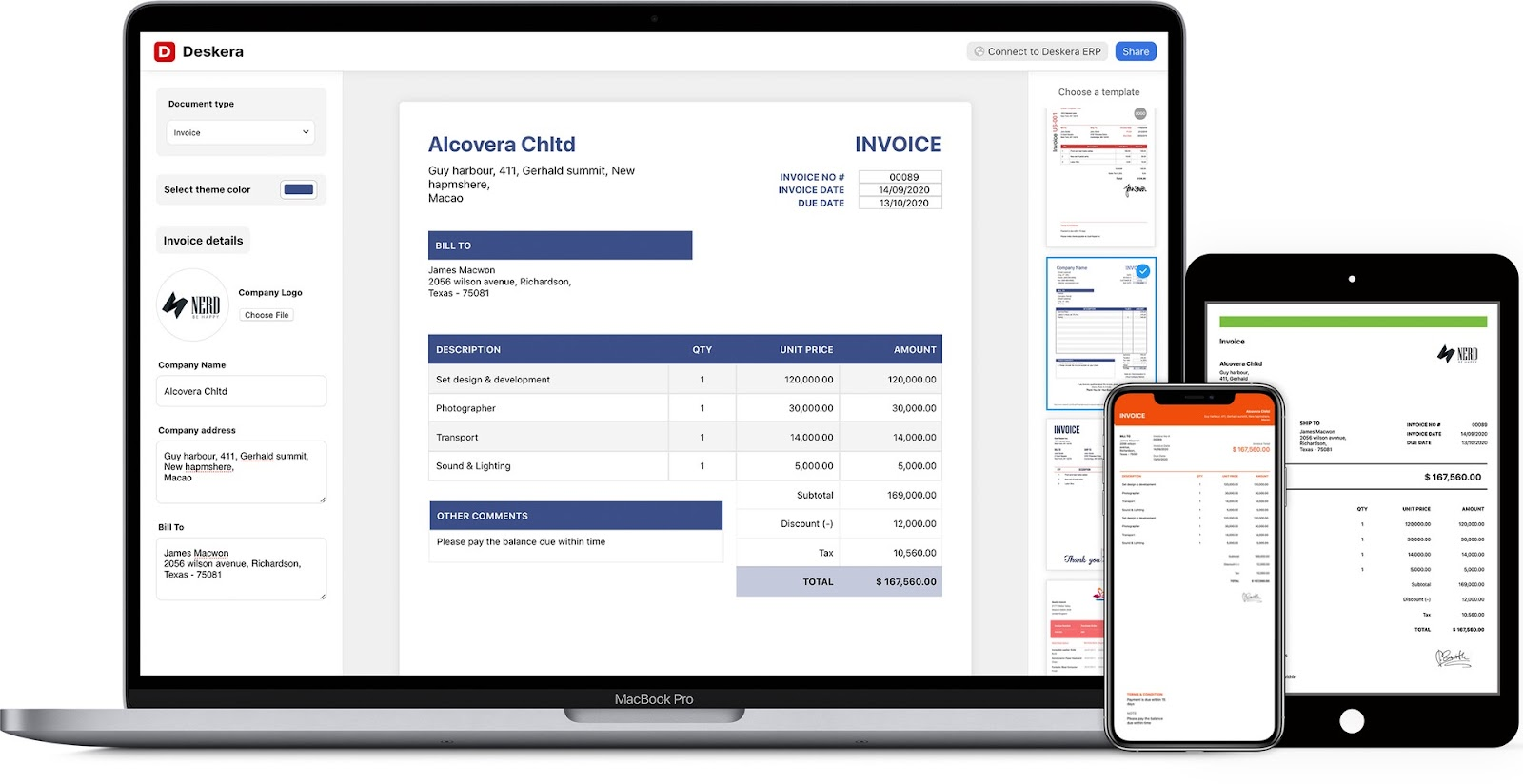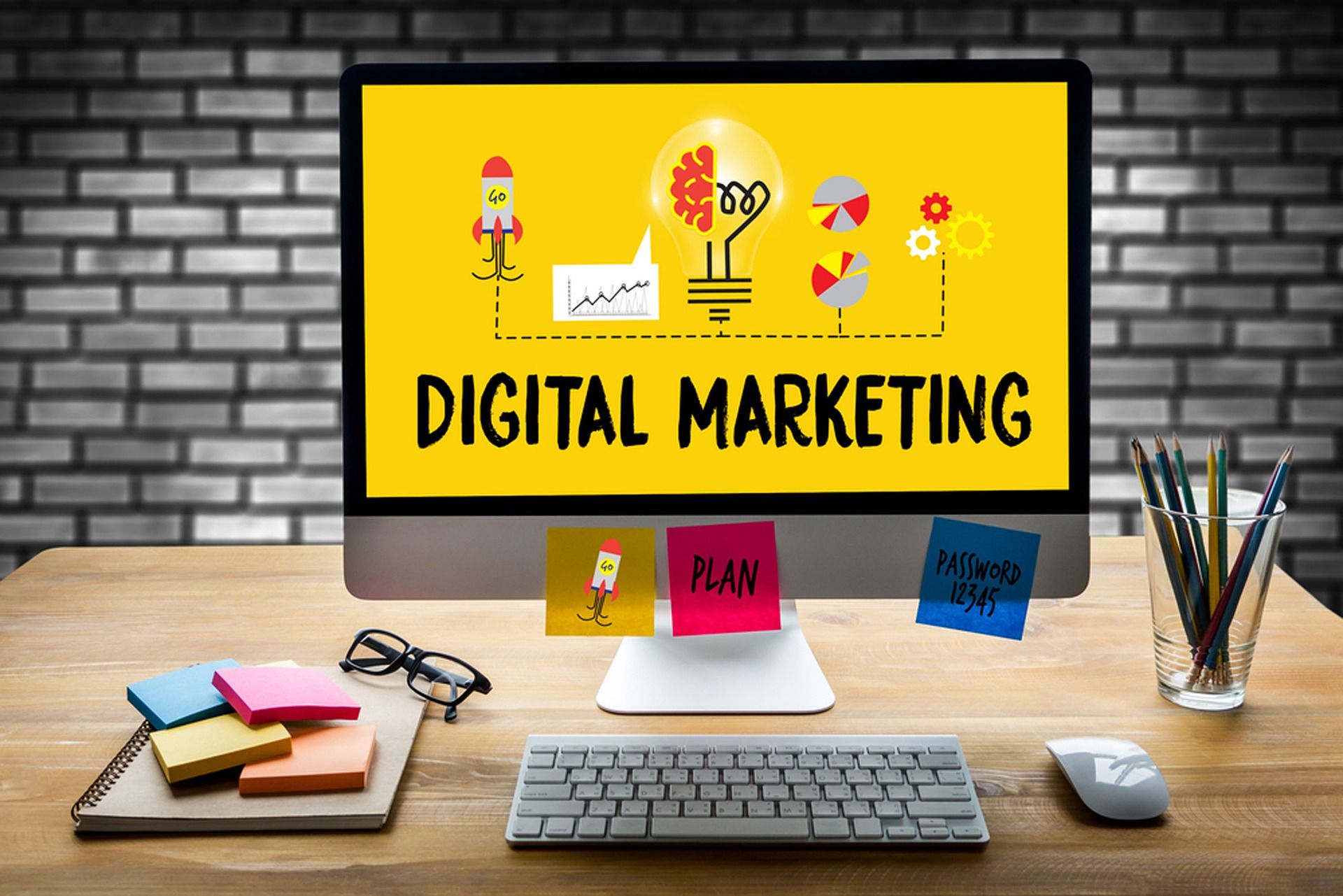Digital marketing constitutes all the modern marketing techniques and is a growing marketing trend, which is why it is important to learn about the fundamentals of digital marketing.
“It’s hard to find things that won’t sell online.” – Jeff Bezos
Once upon a time a few business owners were looking for an easy way to reach to their customers with their products and services. They were struggling to get into the minds of their customers. The business owners did not have any way to reach to their customers quickly. And that’s when digital marketing came to their rescue. It changed the way world looked at marketing once.
With the introduction of digital marketing, the companies realized that their business does not have to be limited to the physical area and they can now spread their wings online, exactly where the world is. With digital marketing comes its fundamentals that you must be aware of to strengthen your digital marketing.

Hence, here we are with this article to help you understand the fundamentals of digital marketing. We will not only learn what these fundamentals of digital marketing are but what do they bring to the table for you as a business owner.
This article will explore the following areas:
- What is digital marketing?
- Why is digital marketing important?
- What are the fundamentals of digital marketing?
- How can Deskera assist you?
What is Digital Marketing?
Digital marketing is marketing your product, whether a product or service, through digital means. It involves marketing through online mediums and can be understood as the opposite of traditional marketing.
Digital marketing constitutes all the modern marketing techniques and is a growing marketing trend, which is why it is important to learn about the fundamentals of digital marketing. It has opened many avenues for different organizations, and every brand has to imperatively employ digital marketing techniques for leading their business successfully.
Before we delve into the fundamentals of digital marketing, let us find out why is digital marketing important for your company.
Why is Digital Marketing Important?
Here are few reasons why digital marketing is important for your business:
Cost Effective
Digital marketing efforts require barely any initial investment. This is great for small businesses. Most digital marketing tools offer basic features free of cost. It is up to the businesses to make the best use of them. Check out this list of 10 best digital marketing tools.
Wider Reach Higher Reach
With digital marketing, the reach is global. Hence, you can take orders for your product or service from all over the world and it need not be limited to one area. And when you go global, you can still niche your audience to selected individuals. Thus, it’s a win-win.
Building Customer Base
The challenge with small businesses is that one needs to build a customer base. This is based on building a rapport with a strong customer relationship. With CRM tools such as Deskera you can manage this easily.
The challenges for big businesses are slightly different. They need to retain existing business and focus on brand reputation, client retention and on the growth of the business.
Brand Awareness
If a customer has no awareness of your brand then he cannot make a conversion. To tackle this, brand visibility is extremely important. With pay-per-click and other kinds of paid promotions, you can really attract customers to your small business.
Increase in ROI
Companies can increase their revenue with digital media by investing in ads and thus, increasing conversions. The investment in digital media is much lesser than traditional media and the returns are also higher. Did you know? You can run ads on certain digital platforms for as low as 1$.
Hope you have understood what makes digital marketing important for your business, now let us find out what the fundamentals of digital marketing are. Let’s get started!
What are the Fundamentals of Digital Marketing?
SEO

SEO stands for “search engine optimization.” In simple terms, it means the process of improving your site to increase its visibility when people search for products or services related to your business in Google, Bing, and other search engines.
The better visibility your pages have in search results, the more likely you will garner attention and attract prospective and existing customers to your business. Search engines such as Google and Bing use bots to crawl pages on the web, going from site to site, collecting information about those pages, and putting them in an index.
The more visibility one can get through a search; the more are the chances of attracting traffic and potential consumers. It explains why SEO is important. The Internet has become the top medium among people to get information, so if businesses want to get noticed and ranked on a search, they have to invest in SEO activities.
SEO is the organic way of gaining traffic. It is through the bots that Google or any other search engine uses that indexes the content. The bots crawl the web, and using various algorithms, they analyze the content index and then decide in which order the content would appear in the search results.
Regardless of what search engine you use, search results are constantly changing. Google mainly has updated lots of things surrounding how they rank websites by way of lots of different animal names recently. A lot of the easiest and cheapest ways to get your pages to rank in search results have become extremely risky in recent years.
Google’s algorithm is highly complex, and here are some notes for anyone looking to dive deeper into how Google ranks sites:
- Google is looking for pages that contain high-quality, relevant information about the searcher’s query.
- They determine relevance by reading your website’s content and evaluating algorithmically whether that content is relevant to what the searcher is looking for, primarily based on the keywords it contains.
- They determine “quality” by a number of means, but prominent among those is still the number and quality of other websites that link to your page and your site as a whole. Simply put, if the only sites that link to your blue widget site are blogs that no one else on the Web has linked to, and my blue widget site gets links from trusted places that are linked too frequently.
- It studies how people engage with your site. Whether or not they find the information they need and stay on your site, or bounce back to the search page and click on another link? Or do they just ignore your listing in search results altogether and never click-through.
Content Marketing
Companies that use content marketing see approximately 30% higher growth rates than businesses not using it.

Content marketing is a marketing technique of creating and distributing valuable, relevant, and consistent content to attract and acquire a clearly defined audience to drive profitable customer action.
It is a long-term strategy that focuses on building a strong relationship with your target audience by giving them high-quality content that is relevant to them consistently.
Eventually, when customers make a purchase decision, their loyalty already lies with you. They will purchase your product and prefer it over competitors’ options. In contrast to one-off advertising, content marketing shows that you care about your customers.
When we say content, it is not just blogs. It can be in the form of articles, videos, podcasts, or any other media meant to engage and retain an audience. It can be achieved through blogs, newsletters, emails, etc.
Content marketing is also an organic way of increasing traffic by developing SEO- friendly content and helping in increasing brand awareness. When done strategically, content marketing leads to great results, which can be analyzed by the fact that businesses with blogs get 67% more leads than other companies. Content marketing helps in earning leads and helps brands to convey the product ideas and vision.
Businesses with blogs get 67% more leads than other companies.
Regardless of what type of marketing tactics you use, content marketing should be part of your process, not something separate. Quality content is part of all forms of marketing. But remember, to be effective at content marketing, it is essential to have a documented content marketing strategy.
There are three stages in content marketing:
- At the first stage of the sales process, your content should focus on your audience’s top concerns. Writing about their pain points, challenges, and questions gives you the best chance of engaging with them. Content at the awareness stage should be educational, how-to advice. Save your selling for the consideration and closing phases.
- Content should offer a hybrid of helpful information and marketing. It should educate the reader about features or functions and how various features address their needs. Of course, your content should have a bent toward what your business offers.
- Content marketing plays an important role when a prospect is close to buying. At this stage, you can focus on sales, as long as you continue to drive home why you’re the best choice rather than just how great your services or products are. Your central message here should be your expertise, knowledge, and the differentiating benefits of what you sell.
Yes, content marketing can feel overwhelming, but it doesn’t have to be. Just follow the few steps below and make your content marketing easy.
Steps to Make Content Marketing Easy
Step 1: Identify your audience
To create content for a particular reader, you need to have a clear idea of their priorities, challenges, and preferences. If you have detailed descriptions of your various segments, choose 1 or 2 to write for—otherwise, craft profiles of your audience members and prospects before starting.
Step 2: Determine the right formats
The right format corresponds with what stage of the sales cycle you’re creating content for. Another important consideration includes what formats will best help you showcase value. For some, it can be a video and maybe a checklist for others.
Step 3: Assign the right people
Decide who will write, edit, and proofread your copy. An audience will judge your content on its quality, and they should. Identify the right resource, internal or external, to create this work. Regardless of who creates it, hire a professional proofreader to review anything before it goes out the door.
Step 4: Scheduling
It’s easy to make a content marketing plan that’s overly ambitious. Once you know the target readers and the formats, create a short-term (3-6 months) plan for a realistic number of content elements you can create based on your budget and resources. Keep track of how long it takes you to create each piece of content so that you can build that time into your schedule.
Social Media Marketing

Social media marketing is a powerful way for businesses of all sizes to reach prospects and customers. Your customers are already interacting with brands through social media, and if you're not speaking directly to your audience through social platforms like Facebook, Twitter, Instagram, and Pinterest, you're missing out! Great marketing on social media can bring remarkable success to your business, creating devoted brand advocates and even driving leads and sales.
Social media marketing is the easiest and most effective way to connect with the target audience. We all have witnessed the power that social media holds. The impact of social media on our opinions is immense. There are millions of people on social media swaying others with their opinions, and if brands use this fact for their benefit, then that becomes social media marketing.
Also, in comparison to the before-mentioned fundamentals, social media marketing can be adopted by any brand size, small or big. If you are running a business in 2021, then make sure that your presence is felt on social media.
Remember, if you are a brand looking to scale up in the market, then you should aim to stay relevant on social media and be equipped with the knowledge of current trends.
Social media marketing also allows the brands the opportunity to track the reach of their content, and with the various tools that are offered by the social media platforms themselves, it has become very easy for the brands to identify patterns and find what works best for them and where they can improve.
Before you begin creating social media marketing campaigns, consider your business’s goals. Starting a social media marketing campaign without a social strategy in mind is like wandering around a forest without a map.
Top questions to set your social media marketing goals:
- What are you hoping to achieve through social media marketing?
- Who is your target audience?
- Where would your target audience hang out, and how would they use social media?
- What message do you want to send to your audience with social media marketing?
Benefits of Social Media Marketing
- Increasing website traffic
- Building conversions
- Raising brand awareness
- Creating a brand identity and positive brand association
- Improving communication and interaction with key audiences
Online Advertising

Online advertising is a marketing strategy that involves the use of the Internet as a medium to obtain website traffic and target deliver marketing messages to the right customers. Online advertising is geared toward defining markets through unique and useful applications.
Since the early 1990s, there has been an exponential increase in the growth of online advertising, which has evolved into a standard for small and large organizations. A major advantage of online advertising is the quick promotion of product information without geographical boundary limits.
Online advertising includes banner ads, search engine results pages, social networking ads, email spam, online classified ads, pop-ups, contextual ads, and spyware.
Online advertisements are purchased through one of the following common vehicles:
- Cost per Thousand (CPM): Advertisers pay when their messages are exposed to specific audiences.
- Cost per Click (CPC): Advertisers pay every time a user clicks on their ads.
- Cost per Action (CPA): Advertisers only pay when a specific action (generally a purchase) is performed.
Online advertising is considered the best way to reach the target audience and increase brand awareness. The mediums like Google and Facebook have provided many resources that help the brand build their ads and reach the targeted audience. Also, online advertising has offered the brands the ability to keep track and analyze the reach, which is not possible with traditional marketing.
Types of Online Advertising
Social media advertising
Most social media sites now easily allow advertisers to utilize their reach and promote their products from within the platform. They also include good analytics tools to assess the success of the investment made.
This might include a promoted tweet or post, a promotion of user-generated content, or even an entire campaign that is released across multiple social channels. , you can start to consider advertising on social media platforms.
Content marketing
Its primary focus is to attract organic traffic to a website by improving a site’s SEO, but once you have the strategy and content in place, you can increase its reach and engagement by paying for the content to feature on relevant websites. Paid advertising can help to increase the ROI of content marketing .i.e., without promotion, the production costs can often outweigh the potential return.
Search engine marketing
Search Engine Marketing is designed to increase the visibility of your website on the search engine results pages (SERP) by paying to appear on search engines, such as Google.
It is not to be confused with SEO (search engine optimization), which is the art of appearing as high as possible within the search engines without having to pay for it.
Display advertising
Display advertising is when your advert, usually made up of branded photos, videos, graphics, or rich media content - is placed on third-party websites, which, when clicked, refer the user back to your own website.
One of the safest ways to advertise online is through carefully selected website placements that will complement your brand positioning. It means you’ll always appear on sites that you actually want to be on, rather than sites chosen by a third-party platform.
Mobile advertising
With so many of us spending such a big part of our day using our smartphones, it’s no wonder advertisers are using mobile advertising to reach their customers. Different types of mobile-specific marketing include advertising via mobile apps, push notifications, SMS/text messaging, and MMS.
Email Marketing
Study reveals for every $1 spent, email has an average return on investment (ROI) of $38

Email marketing is a powerful marketing channel, a form of direct marketing as well as digital marketing, that uses email to promote your business’s products or services. It can help make your customers aware of your latest items or offers by integrating them into your marketing automation efforts.
It can also play a pivotal role in your marketing strategy with lead generation, brand awareness, building relationships, or keeping customers engaged between purchases through different types of marketing emails.
Email marketing can help you build a relationship with your audience while also driving traffic to your blog, social media, or anywhere else you’d like folks to visit. You can even segment your emails and target users by demographic, so you’re only sending people the messages they want to see most. Here are some email marketing campaign tips to get started.
Email marketing also allows you to run A/B tests of a subject line or call to action to identify the best-performing message by using email marketing software that can also be configured to send out emails easily.
Now you may be wondering, how do you build an audience of people to send email to as part of your internet marketing efforts in the first place? Here is all you can do.
Many email marketing companies have a strict, permission-based policy regarding email addresses, which means that sending to purchased lists is prohibited. Instead, concentrate on encouraging folks to opt in to receiving messages from you by using lead magnets. You could offer a discount on your customers' first orders when they sign up for your email list.
Make sure you adhere to any legal requirements and applicable laws in your area when sending automated emails. Like the CAN-SPAM Act in the United States, the Canadian Anti-Spam Law (CASL), or the General Data Protection Regulation (GDPR) in the European Union for the treatment of personal information.
Use email to have a conversation with your customers. Email is a great marketing tool, but it can help your business in other ways, too. Consider taking the occasional break from your regular marketing content to send out surveys, tell your customers how much you appreciate them after buying from you, follow up after an abandoned cart, or just say hello.
Once someone has trusted you with their email address, don’t abuse that trust. Flooding your audience’s inbox with excessive emails will cause them to lose interest or unsubscribe entirely. Focus on sending them relevant, engaging messages.
Research suggests that each of your customers receives 121 emails every day. That means, if you don’t take the time to develop a strategy, your emails will get lost in crowded inboxes, or worse, be sent to the spam folder.
You can learn how to build an effective email strategy and send emails that people want to read. All you need is a plan.
Here are a few steps that can help you plan:
- Define your target audience
- Establish your goals
- Get people to sign up
- Select a campaign type
- Schedule the emails
- Measure your results
Once your email marketing strategy is in place, you might want to look at the tips below to structure your emails right and get more traffic.
Tips to Improve Email Marketing
Copy: The copy in the body of your email should be consistent with your voice and stick to only one topic.
Images: Choose images that are optimized for all devices, eye-catching, and relevant.
CTA: Your call-to-action should lead to a relevant offer and stand out from the rest of the email.
Timing: Based on a study that observed response rates of 20 million emails, Tuesday at 11 AM ET is the best day and time to send your email.
Responsiveness: 55% of emails are opened on mobile. Your email should, therefore, be optimized for this as well as all other devices.
Personalization: Write every email like you’re sending it to a friend. Be personable and address your reader in a familiar tone.
Subject Line: Use clear, actionable, enticing language that is personalized and aligned with the body of the email.
Email marketing continues to deliver results. But email marketing has evolved. It's no longer as simple as sending the same email to all. It's time to update your email marketing strategy. Now, you need to send targeted messages. Messages that are personalized and optimized for multiple devices.
You also need to test new elements. Trends change quickly, and what worked 12 months ago may not be successful today. Be open to testing. And when you understand what works, find ways to automate it through triggered emails.
The conclusion is, if you implement these new changes into your email marketing strategy, your customers will be more responsive, your campaign performance will improve, and your business will continue to grow.
Pay-Per-Click (PPC)

PPC stands for pay-per-click, a model of internet marketing in which advertisers pay a fee each time one of their ads is clicked. Essentially, it’s a way of buying visits to your site rather than attempting to “earn” those visits organically.
Search engine advertising is one of the most popular forms of PPC. It allows advertisers to bid for ad placement in a search engine's sponsored links when someone searches on a keyword that is related to their business offering.
A lot goes into building a winning PPC campaign. From researching and selecting the right keywords, organizing those keywords into well-organized campaigns and ad groups, and setting up PPC landing pages optimized for conversions.
Search engines reward advertisers who can create relevant, intelligently targeted pay-per-click campaigns by charging them less for ad clicks. If your ads and landing pages are useful and satisfying to users, Google charges you less per click, leading to higher profits for your business.
Whenever we talk about pay per click, it will be unfair to leave Google ads behind. Google ads are one of the biggest PPC campaigns. Let us learn a little about it.
What is Google Ads?
Every second, there are 63,000 searches performed on Google, and the majority of search results pages include Google ads. Paid for by businesses, Google ads can be an extremely effective way of driving relevant, qualified traffic to your website exactly when people are searching for the types of products or services your business offers.
Google offers paid advertisements that appear in search results on google.com with the use of Google Ads or advertisements that appear on other websites through the Display Network and Google’s AdSense program.
Google Ads is the single most popular PPC advertising system in the world. The Ads platform enables businesses to create ads on Google’s search engine and other Google properties.
Google Ads operates on a pay-per-click model, in which users bid on keywords and pay for each click on their advertisements. Every time a search is initiated, Google digs into the pool of Ads advertisers and chooses a set of winners to appear in the valuable ad space on its search results page.
The “winners” are chosen based on a combination of factors, including the quality and relevance of their keywords and ad campaigns, as well as the size of their keyword bids.
Conducting PPC marketing through Google Ads is particularly valuable because, as the most popular search engine, Google gets massive amounts of traffic and therefore delivers the most impressions and clicks to your ads.
How often your PPC ads appear depends on which keywords and match types you select. While the number of factors determines how successful your PPC advertising campaign will be, you can achieve a lot by focusing on:
- Keyword Relevance: Crafting relevant PPC keyword lists, tight keyword groups, and proper ad text.
- Landing Page Quality: Creating optimized landing pages with persuasive, relevant content and a clear call-to-action tailored to specific search queries.
- Quality Score: Quality score is Google's rating of the quality and relevance of your keywords, landing pages, and PPC campaigns. Advertisers with better Quality Scores get more ad clicks at lower costs.
- Creative: Enticing ad copy is vital, and if you're advertising on the display network, you can use a tool like our free Smart Ads Creator to create designer-quality ads that will demand clicks.
Lastly, don’t forget the keyword research. Google Trends API can assist you in this because it can search for a great volume of keywords in a short time and also provide you with location-specific and related queries, which you can then analyze to choose the most relevant for your campaign. Without keyword research, you will not be able to have a successful PPC campaign. Your entire PPC campaign is built around keywords, and the most successful Google Ads advertisers continuously grow and refine their PPC keyword list.
If you only do keyword research once, when you create your first campaign, you probably miss out on hundreds of thousands of valuable, long-tail, low-cost, and highly relevant keywords that could drive traffic to your site.
Pick the keywords that are:
- Relevant
- Exhaustive
- Expansive
Once you've created your new campaigns, you’ll need to manage them regularly to make sure they continue to be effective. In fact, regular account activity is one of the best predictors of account success.
Mobile Marketing
According to recent reports, 40% of users’ internet time is spent on mobile devices.

The era of mobile has already arrived. If you're not implementing some kind of mobile marketing strategy, you're already trailing behind. Mobile marketing is the art of marketing your business to appeal to mobile device users.
When done right, mobile marketing provides customers or potential customers using smartphones with personalized, time- and location-sensitive information so that they can get what they need exactly when they need it, even if they're on the go.
Mobile marketing consists of ads that appear on mobile smartphones, tablets, or other mobile devices. Mobile marketing ad formats, customization, and styles can vary, as many social media platforms, websites, and mobile apps offer their own unique and tailored mobile advertisement options. But don’t forget that nothing works without a marketing strategy in place; with mobile marketing, you need one in place too.
Your business needs a mobile marketing strategy for the same reason that you need a computer and wifi access – this is the age in which we live! Walk around any major city, and you’ll find more than just a few folks with faces glued to their smartphone screens., which means simply ignoring the rise of mobile just isn’t an option.
There are several types of mobile marketing strategies that you must know about. Here is a quick list for you.
Types of Mobile Marketing
In-Game Mobile Marketing
In-game mobile marketing refers to mobile ads that appear within mobile games, as in the example below. In-game ads can appear as banner pop-ups, full-page image ads, or even video ads that appear between loading screens.
QR Codes
QR codes are scanned by users, who are then taken to a specific webpage that the QR code is attached to. QR codes are often aligned with mobile gamification and have an element of mystery since users who scan them don’t always know exactly which rabbit hole they’re jumping down.
App-Based Marketing
This is mobile advertising involving mobile apps. While 80% of mobile time is spent engaged with apps, you don’t have to create an app yourself to get in on the action. Services like Google AdMob help advertisers create mobile ads that appear within third-party mobile apps.
Facebook also allows advertisers to create ads that are integrated into Facebook’s mobile app. Facebook’s mobile Promoted Post ads integrate so seamlessly with Facebook’s news feed that users often don’t realize they’re looking at ads.
Location-Based Marketing
Location-based mobile ads are ads that appear on mobile devices based upon a user’s location relative to a specific area or business. For example, some advertisers may only want their mobile ads to appear when users are within a 1-mile radius of their business.
SMS
SMS marketing involves capturing a user’s phone number and sending them text offers. This is considered somewhat passé.
Mobile Search Ads
These are basic Google search ads built for mobile, often featuring extra add-on extensions like click-to-call or maps.
Mobile Image Ads
Image-based ads are designed to appear on mobile devices.
Mobile Marketing can be overwhelming but you can make it easy by keeping the few tips in mind.
Tips to Improve Mobile Marketing
Optimize for Local
Be sure to remember that 1 in 3 mobile searches have local intent. Users often use mobile devices to complement their immediate worldly interactions – where is the nearest gas station? Is there a nearby coffee shop that has wifi? Optimize for local mobile marketing to make sure you are aligning with users’ queries.
Be Clear and Concise
Mobile devices have small screens, which means words should be used sparingly. Cluttered and crowded ads will just drive users to scroll past. When it comes to mobile, it’s best to keep things simple.
Consider Your Audience
The type of audience you’re hoping to reach should influence the kind of mobile ads you use. Are they gamers? Then try taking advantage of in-game ads. Are they young and tech-savvy? Mobile Facebook Promoted Posts might be more likely to get their attention.
Benchmark Your Results
Experimenting is great, but there’s no point in trying new techniques if you’re not tracking your results to see what works and what doesn’t.
Experiment with Different Strategies
There’s a lot of room for experimentation when it comes to mobile marketing. Don’t be afraid to test out some ad extensions with your Google Ads Enhanced Campaigns – try the Google Offers ad extension, or the click-to-call extension, and see how they work for you.
Research Your Target Customers
A marketer should conduct thorough research on their consumer demographic to gather useful information such as what they like, the sites they visit, the apps they use, and so forth. This information enables the marketer to create effective ads.
Leverage Opportunities on Social Media
To effectively push a brand, marketers should create great ads that appeal to large numbers of social media users.
Set Goals
Measuring the results and progress of a particular mobile marketing strategy is only possible if the purposes of the campaign are set beforehand.
Create mobile-friendly campaigns
Since the aim is to push a brand via mobile devices, it makes sense to create content, apps, or websites that are fit for mobile usage.
Perform Location-Based Marketing
One of the most effective ways of minimizing the bounce rate is by providing ads that are relevant to the target audience. Use tools such as Google Trends, GPS, and apps like Google Local inventory to send out campaigns that resonate with the target demographic.
Consider the Unique Features of Mobile Devices
Create ads that can be manipulated by different mobile device features to make the user’s experience quite memorable. For instance, rather than creating video ads that cannot be paused, one can put up an advertisement that can be paused, rewound, forwarded, and so forth to enable customers to get a clearer picture regarding a product.
Offer incentives
Providing some rewards or offers will encourage prospective customers to take action.
Note: The websites that are designed should be mobile-friendly, and activities that can be considered unique to mobile marketing are in-app-built notifications, text messages, and social media activity to a certain extent.
Affiliate Marketing

Affiliate marketing is the process by which an affiliate earns a commission for marketing another person’s or company’s products. The affiliate simply searches for a product they enjoy, then promotes that product, and earns a piece of the profit from each sale they make. The sales are tracked via affiliate links from one website to another.
Affiliate marketing works by spreading the responsibilities of product marketing and creation across parties; it manages to leverage the abilities of a variety of individuals for a more effective marketing strategy while providing contributors with a share of the profit.
To make this work, three different parties must be involved:
Seller and Product Creators
Whether a solo entrepreneur or large enterprise, the seller is a vendor, merchant, product creator, or retailer with a product to market. The product can be a physical object, like household goods, or a service, like makeup tutorials.
Also known as the brand, the seller does not need to be actively involved in the marketing, but they may also be the advertiser and profit from the revenue sharing associated with affiliate marketing.
The Affiliate or Publisher
Also known as a publisher, the affiliate can be either an individual or a company that markets the seller’s product in an appealing way to potential consumers. In other words, the affiliate promotes the product to persuade consumers that it is valuable or beneficial to them and convince them to purchase the product.
If the consumer does end up buying the product, the affiliate receives a portion of the revenue made. Affiliates often have a very specific audience to whom they market, generally adhering to that audience’s interests. This creates a defined niche or personal brand that helps the affiliate attract consumers who will be most likely to act on the promotion.
The Consumer
Whether the consumer knows it or not, they (and their purchases) are the drivers of affiliate marketing. Affiliates share these products with them on social media, blogs, and websites.
When consumers buy the product, the seller and the affiliate share the profits. Sometimes the affiliate will choose to be upfront with the consumer by disclosing that they are receiving commission for the sales they make. Other times the consumer may be completely oblivious to the affiliate marketing infrastructure behind their purchase.
Either way, they will rarely pay more for the product purchased through affiliate marketing; the affiliate’s share of the profit is included in the retail price. The consumer will complete the purchase process and receive the product as normal, unaffected by the affiliate marketing system in which they are a significant part.
There are affiliate marketing channels too that you should make a note of if you want to excel at affiliate marketing.
Affiliate Marketing Channels
Influencers
An influencer is an individual who holds power to impact the purchasing decisions of a large segment of the population. This person is in a great position to benefit from affiliate marketing.
They already boast an impressive following, so it’s easy for them to direct consumers to the seller’s products through social media posts, blogs, and other interactions with their followers. The influencers then receive a share of the profits they helped to create.
Influencer marketing campaigns are particularly popular on Instagram, where brands partner with influencers who are seen as experts or authorities in their specific niches. Depending on the deal, a campaign could consist of a series of product reviews with photos, account takeovers, or live videos.
While an influencer might have their own branding and aesthetic, it’s important to add elements that tie-up with your brand to ensure brand recall and recognition. This can be achieved by using apps like Instasize, where you can quickly edit and customize your campaign’s creative in a tap.
Bloggers
With the ability to rank organically in search engine queries, bloggers excel at increasing a seller’s conversions. The blogger samples the product or service and then writes a comprehensive review that compellingly promotes the brand, driving traffic back to the seller’s site.
The blogger is awarded for his or her influence in spreading the word about the value of the product, helping to improve the seller’s sales. For example, my article on the best email marketing software includes product reviews and affiliate links.
Paid Search
Developing and monetizing microsites can also garner a serious amount of sales. These sites are advertised within a partner site or on the sponsored listings of a search engine. They are distinct and separate from the organization’s main site.
By offering more focused, relevant content to a specific audience, microsites lead to increased conversions due to their simple and straightforward call to action.
Email Lists
Despite its older origins, email marketing is still a viable source of affiliate marketing income. Some affiliates have email lists they can use to promote the seller’s products. Others may leverage email newsletters that include hyperlinks to products, earning a commission after the consumer purchases the product.
Another method is for the affiliate to build an email list over time. They use their various campaigns to collect emails, then send out emails regarding the products they are promoting.
Large Media Websites
Designed to create a huge amount of traffic at all times, these sites focus on building an audience of millions. These websites promote products to their massive audience through the use of banners and contextual affiliate links.
This method offers superior exposure and improves conversion rates, resulting in a top-notch revenue for both the seller and the affiliate marketer.
Video Marketing
After watching a video, customers are 64-85% more likely to make a purchase.

Video marketing is a forward-facing marketing strategy that integrates engaging video into your marketing campaigns. Video marketing can be used for everything from building customer rapport to promoting your brand, services, or products. Additionally, video marketing can serve as a medium to present how-Tos, promote customer testimonials, live-stream events, and deliver viral (entertaining) content.
Your brand creates videos that, in some way or another, promote your company, drive sales, raise awareness of your products or services, or engage your customers. In practice, it’s a little more complicated. Like many of your marketing efforts, video marketing is data-driven, so you’ll want to monitor various metrics and track customer engagement.
Here are a few tips to start video marketing on the right note.
Tips to Improve Video Marketing
Allocate Resources
You’re going to need to designate some budget for video – at the least, decent equipment, good editing software, and a video marketing guru (or, better, team) – as well as time to create it.
Engage
It’s not enough to simply tell your stories; you must engage your audience while you do so. How will you make your stories interesting? What will hook your audience?
Keep it short
There’s no set length for marketing videos (although there are recommendations), but the general rule is that shorter is better. Be ruthless with your editing. Cut, cut, cut out everything extraneous. Attention spans are short, so make the best of what you get.
Publish
Publish your videos far and wide – embedded in your website, uploaded to Google-owned YouTube, and on all your social media channels. Then, all you are left with is promotions.
Analyze
Track metrics and stats to determine which videos do the best – and why.
Tell your stories
Storytelling has never been as important as it is in the video, so get brainstorming: What stories do you want to tell? How will you tell them?
This was how to do video marketing, wondering why you must do it? We have enlisted a few benefits of video marketing that help you understand its importance.
Benefits of Video Marketing
Increases Information Retention
Videos boost information retention. If your customers hear something only, they’re likely to retain about 10% of that information three days later; by contrast, if what they hear is accompanied by relevant imagery, they’ll retain an average of 65% of that information three days later.
Help Connect with Consumers
Video helps you connect with your audience. Today, so much of a company’s marketing efforts are designed to help build trust. Video is the bridge that links what you say to who you really are, allowing customers to peer behind the curtain and get to know your brand.
Easy Backlinks & SEO Gold Mine
Video helps build backlinks to your site, boost likes and shares (which can affect search rankings), and drive traffic to your site. And let’s not forget that YouTube is owned by Google, so be sure to post your videos to YT and tag, tag, tag with keywords/key phrases.
Video marketing is certainly the future of marketing; let us look at the following points and learn what some of the best practices of video marketing are.
Best Practices of Video Marketing
Target your Audience
First, you need to realize the stages that exist inside your business’ sales funnel. Some people are just entering the funnel, while others might be ready to purchase.
Others still are somewhere in between. Your videos cannot cater to the entire funnel; they have to target people at specific points of the funnel. For instance, some videos might focus on sparking interest in your viewers or getting engagement, while others are focused on the end of your buyer’s journey and finally convert them into a customer.
Use Appropriate Length of the Video
People have short attention spans as it is, and if you couple that with the hectic schedules of everybody these days and the fact that there are thousands of other things on the internet for their attention, you need to realize the importance of keeping certain videos short and sweet.
In the past 15 years, the average attention span has gone from 12 seconds to 8 seconds. Experts say a video that doesn’t engage in the first 5-10 seconds will lose 1/5 of your viewers.
Define the Aim of the Video
Every video you produce should have an aim. How can you measure a video’s success if you don’t have a concrete goal that you’re trying to accomplish? Before you even press the record button, plan out what you’re going to do and what purpose it’s going to serve for your business.
Study your Metrics
View count is the first, and sometimes the only, metric that people look at when they publish a video, but it’s far from the most important. It doesn’t matter in most cases if you have a video that goes viral (when speaking about growing a business) unless your sole goal was spreading awareness about your brand. In reality, most videos will likely aim at increasing leads and conversions. That means 1,000 views don’t matter if none of those viewers converted.
So, what your waiting for, set up your marketing team and let video marketing boost the growth of your business.
Audio Marketing
Home devices such as Amazon Echo and Google Home have provided us all a new medium to consume content, and this technology has also started to make its way into cars and other public environments via IoT devices and wearable technology- Scott Colenutt

What? That’s also a thing? Many of you must be wondering. You probably know all about it but still haven’t cracked that it’s actually audio marketing. For all those who haven’t guessed it yet, then the terms audio marketing, voice marketing, and audio experiences all refer to the practice of producing audio content, commonly in the form of radio shows, podcasts, or smart home assistant skills. Larger brands like Apple and Microsoft go a step further by bringing voice-activated assistants into our lives à la Siri and Cortana.
Here are some of the audio marketing strategies that you must know about.
Strategies of Audio Marketing
Podcasting
According to a 2017 Edison Research study, 42 million Americans over the age of 12 listen to at least one podcast episode each week.
Originally known as ‘audio blogging, podcasting is nothing new. However, it has grown in popularity over the years. Moreover, monthly podcast listening is 67 million.
It should also be noted that a successful podcast doesn’t need to mimic a radio talk show. Some podcasters indulge in monologues, while others strip the audio from their vlogging adventures or public speeches to form podcast content.
Alternative podcasting experiences can be delivered through Facebook Live Audio and Anchor, two channels that are trying to carve out their own spaces in the audio marketing space.
Audiograms
Publishing audiograms is probably the easiest way to dip your toes into the audio marketing world. An audiogram is just audio that overlays a still image. That image and whatever audio message goes along with it, can be published on Facebook, Twitter, and Instagram.
Smart Home Assistants
Smart home assistants are bringing audio experiences and voice-activated search into our homes, and 35.6 million Americans will use a voice-activated device at least once per month, according to eMarketer – a 128.9 percent increase since 2016.
Consumers are slowly but surely increasing their demand for audio experiences both inside and outside of the home. And now that there are at least three clear ways to add audio to your content strategy is there any excuse not to?
How Can Deskera Assist You?
Whether you are a sales manager or running your own business, you have to fulfill tons of duties and responsibilities. Using the Deskera CRM system, you can manage your contacts, leads, and sales deals. You can use the CRM system to manage all customer data and manage your leads, sales negotiations, and deals.

Doing so will help you to save the time taken in transferring customer data between the different systems. Having a good CRM system will help you manage your financial and sales reports and be prepared to kick off your meetings.
Deskera can also assist you with real-time updates about your business like cash flow status, customer satisfaction, inventory management, sales, purchases, purchase orders, customer tickets, customer satisfaction, managing leads, revenues, profit and loss statements, and balance sheets.

Moreover, it would also help in integrating sales methodology across different platforms onto one system so that you have a consolidated list for email campaigns, leads management, and sales pipeline, to mention a few.
It will also help you to sync between your orders, payments, taxes, refunds, product variants, sending out invoices and reminders, facilitating invoice management, and even undertaking follow-ups and advertisement campaigns.
Run through this short video to learn more about Deskera CRM:
Such a consolidated platform will help you to improve your sales through building effective sales compensation plans and also facilitate faster and well-informed decision-making. It will help you in strengthening your opportunities and being braced for the threats.
Deskera books and Deskera CRM will also be able to ensure the highest customer satisfaction and thereby an increase in net revenues and net profits.
Key Takeaways
- SEOmeans the process of improving your site to increase its visibility when people search for products or services related to your business in Google, Bing, and other search engines.
- Content marketing is a marketing technique of creating and distributing valuable, relevant, and consistent content to attract and acquire a clearly defined audience to drive profitable customer action.
- Social media marketing is a powerful way for businesses of all sizes to reach prospects and customers.
- Online advertising is a marketing strategy that involves the use of the Internet as a medium to obtain website traffic and target and deliver marketing messages to the right customers.
- Email marketing is a powerful marketing channel, a form of direct marketing as well as digital marketing, that uses email to promote your business’s products or services.
- PPC stands for pay-per-click, a model of internet marketing in which advertisers pay a fee each time one of their ads is clicked.
- Mobile marketing is the art of marketing your business to appeal to mobile device users.
- Affiliate marketing is the process by which an affiliate earns a commission for marketing another person’s or company’s products.
- Video marketing is a forward-facing marketing strategy that integrates engaging video into your marketing campaigns.
- Audio marketing, voice marketing, and audio experiences all refer to the practice of producing audio content, commonly in the form of radio shows, podcasts, or smart home assistant skills
Related Articles:











